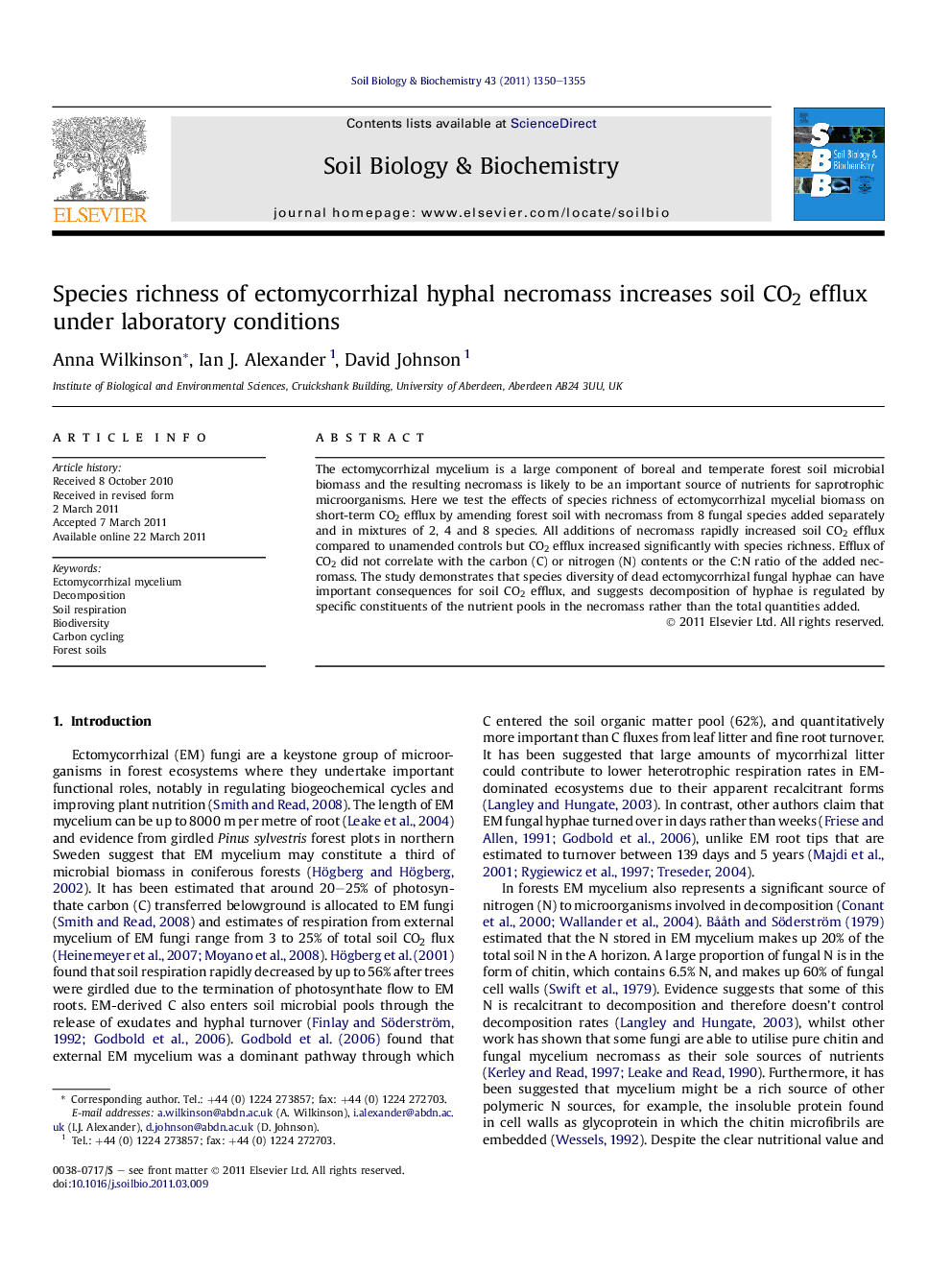| Article ID | Journal | Published Year | Pages | File Type |
|---|---|---|---|---|
| 2025312 | Soil Biology and Biochemistry | 2011 | 6 Pages |
The ectomycorrhizal mycelium is a large component of boreal and temperate forest soil microbial biomass and the resulting necromass is likely to be an important source of nutrients for saprotrophic microorganisms. Here we test the effects of species richness of ectomycorrhizal mycelial biomass on short-term CO2 efflux by amending forest soil with necromass from 8 fungal species added separately and in mixtures of 2, 4 and 8 species. All additions of necromass rapidly increased soil CO2 efflux compared to unamended controls but CO2 efflux increased significantly with species richness. Efflux of CO2 did not correlate with the carbon (C) or nitrogen (N) contents or the C:N ratio of the added necromass. The study demonstrates that species diversity of dead ectomycorrhizal fungal hyphae can have important consequences for soil CO2 efflux, and suggests decomposition of hyphae is regulated by specific constituents of the nutrient pools in the necromass rather than the total quantities added.
► Additions of ectomycorrhizal fungal necromass rapidly stimulated soil CO2 efflux. ► Soil CO2 efflux increased significantly alongside ectomycorrhizal species richness. ► Fungal diversity can have consequences for soil CO2 efflux upon entering the decomposer subsystem.
